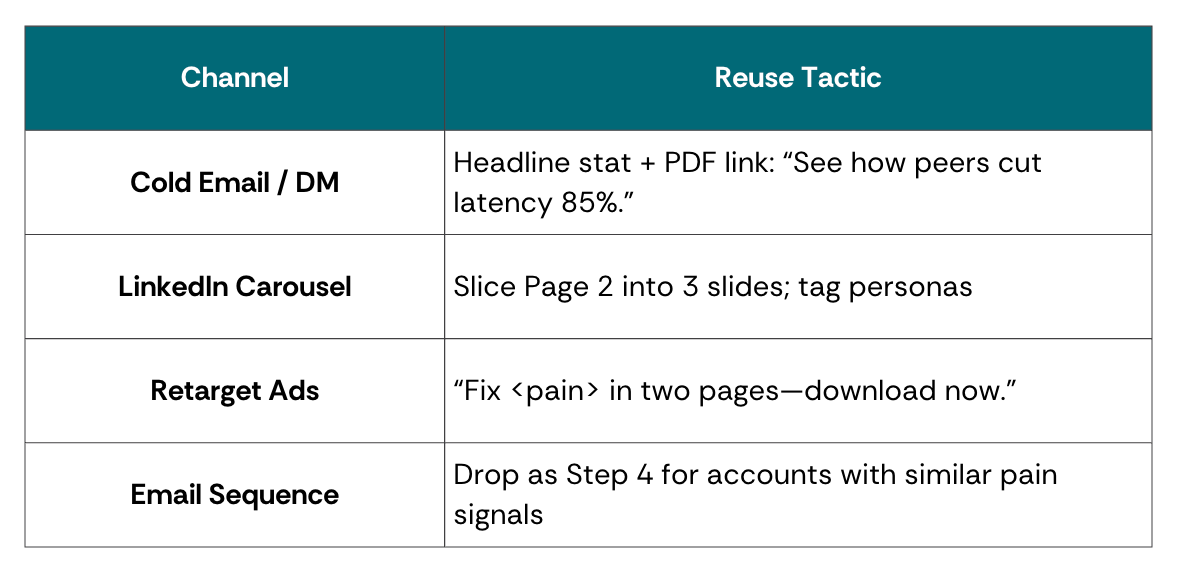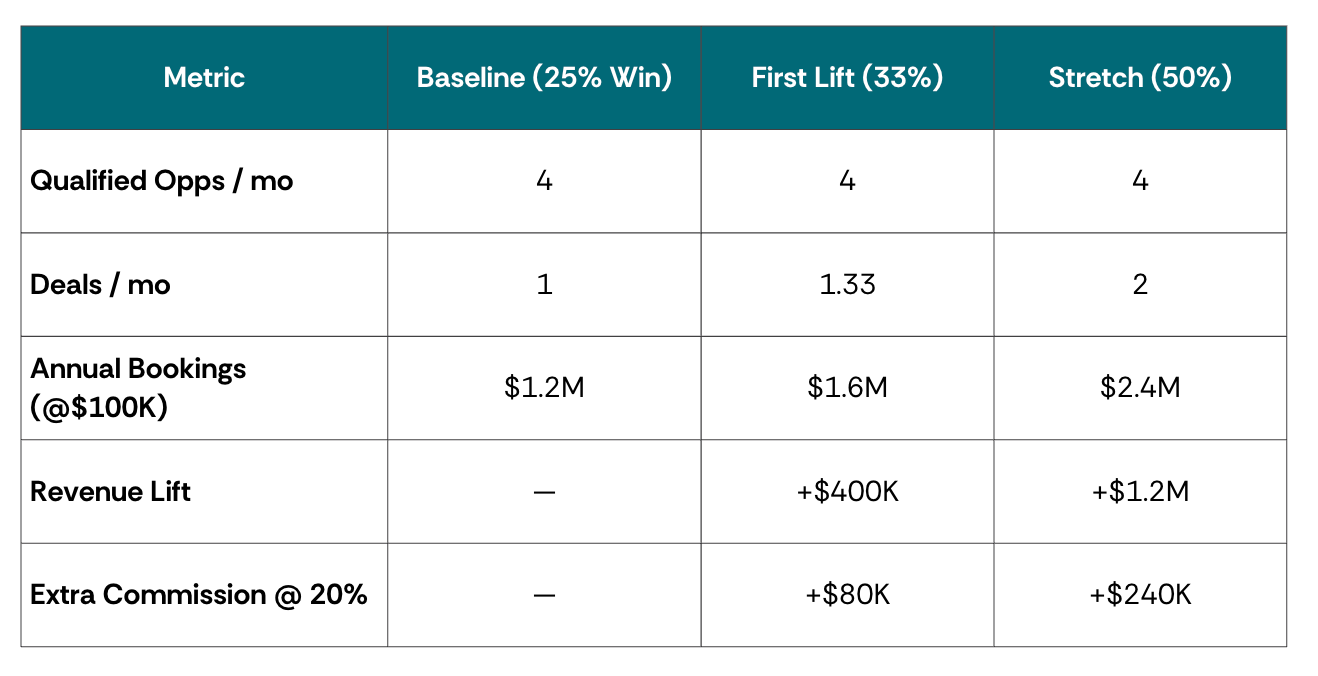If you've spent any time on LinkedIn, then you know how noisy the AI space has become. It can feel like you're getting left behind, that everyone else has it all figured out. And, it seems like there’s an AI tool for everything: agents promising to disrupt your demand gen strategy, flashy bots that'll automate your SDRs, GPT-powered sequences that'll handle your entire outbound effort. We're all hungry for new leads and more efficient ways of working, but what's actually moving the needle? What's just noise?
I sat down with Andrew Ettinger, Technical CRO and GTM Strategist, to unpack his take on the real opportunity most teams are missing: using AI not just to create demand, but to convert it into revenue. Andrew even shared some handy step-by-step plays and prompts you can implement immediately (we love it when it gets tactical!).
When I asked Andrew about the AI hype, he pointed out that we're missing the bigger picture. "AI should be amplifying value, not just cranking up volume," he told me. "I see a lot of teams blasting inboxes and calling it innovation, but we're actually burning through our ICPs and our reps are spending time on tools that aren't really moving the needle."
So where does Andrew see real opportunity? Conversion. “We spend all this energy building 4x pipeline coverage, but then we lose three out of four deals,” he said. “That's where the real impact is.”
Instead of focusing on generating more leads, we should be using AI where it can have the biggest impact—converting the prospects we already have into actual revenue. This means using AI to better understand buyer pain points, craft content your executive buyers will actually read, and get it in front of them.
Here are the five mid-funnel plays that Andrew walked me through, with the step-by-step instructions and prompts you can use right away.
Play #1: Use AI to Extract Buyer Signals from Real Calls
Why this works: Every recorded sales call is a goldmine of real customer language, pains, blockers, metrics. That’s the foundation for revenue-generating assets.
Your Move:
Grab transcripts from Gong, Chorus, or Zoom.
Feed them into a Large Language Model (ChatGPT, Claude, Gemini).
Surface:
Top 3 business pains (with verbatim quotes)
Related metrics
Roles (Champion, EB, Blocker)
What’s at stake if they do nothing
Do this across multiple calls to find patterns.
Prompt: Pain & Metric Extractor
You are a revenue analyst. From the transcript below, output:
• 3 biggest business pains mentioned (with verbatim quotes)
• Any quantitative metrics tied to those pains
• Role of each speaker (Champion, EB, User, Blocker)
• One sentence describing the stakes of inaction
→ Paste transcript here
Play #2: Build a 2-Page Whitepaper Executive Buyers Will Actually Read
Why this works: Your buyers rarely open lengthy decks and PDFs. Instead, use the insights from your calls to build a short, punchy whitepaper that speaks the EB’s language. It’s easier to consume, and it is specifically tailored to your most recent conversations.
Page 1: The Stakes
150-word narrative summarizing the 3 biggest pains
One peer benchmark
One “cost of inaction” stat
Page 2: The Value Framework
Prompt: Whitepaper Builder
Using the bullet list of pains & metrics below, draft:
• Page 1 narrative (≤150 words)
• Page 2 four-column value table
• Closing 40-word EB invite
Tone: data-driven, executive
→ Paste extracted list here
Play #3: Use the Whitepaper to Book the Executive Buyer Meeting
Here’s the part most people miss. Send the PDF with a direct ask, and text your champion before you email it. You want to get in the room, not just in the inbox.
“Let’s review this together in 15 minutes to confirm the assumptions.”
If you don’t have their cell number? That’s a bigger problem. And if you can’t get an in-person EB meeting, your close rate just got cut in half.
Prompt: EB Email Hook
Distill the whitepaper into a 120-word email:
• Lead with projected ROI
• Cite one peer proof point
• CTA: 15-min meeting
Tone: concise, confident
Play #4: Reuse the Whitepaper for Top-of-Funnel
You just built high-value Middle of Funnel content, so why not use it to pull in new prospects?
Reuse Channels:
Also:
Post insightful comments under ICP content.
DM: “Do you mind if I share a whitepaper we put together on this?”
Host a weekly 20-minute micro-webinar with Product and a customer.
Play #5: Instrument & Iterate
Run a 90-day test comparing deals that use your AI-generated whitepaper versus your current process. Track win rate, sales cycle length, EB meetings per opportunity, and revenue per rep hour. Do monthly check-ins to see what's working, then double down on the winners and kill the losers.
Track two cohorts:
Deals with the AI-generated whitepaper
Deals without
Metrics to Track:
Win rate
Sales cycle length
EB meetings per opp
Revenue per rep hour
Do a quarterly rinse and repeat.
Why MoFU (Middle of Funnel) Wins Over More Leads
Most teams think they need more leads to hit their numbers. But here's what actually happens when you focus on converting what you already have:
Use AI Where Revenue Dies
Top-of-funnel automation is useful, but not if your middle is leaky. Instead:
Extract buyer insights from real conversations.
Package into content that gets read.
Use it to close more—and attract more.
If you improve the win rate from 25% to 33%, that’s an extra $400K ARR per rep. Push to 50%? Add $1.2M. This isn’t just better sales,it’s exponential growth.
Let’s stop leaking revenue. Let’s close what’s already in front of us.






